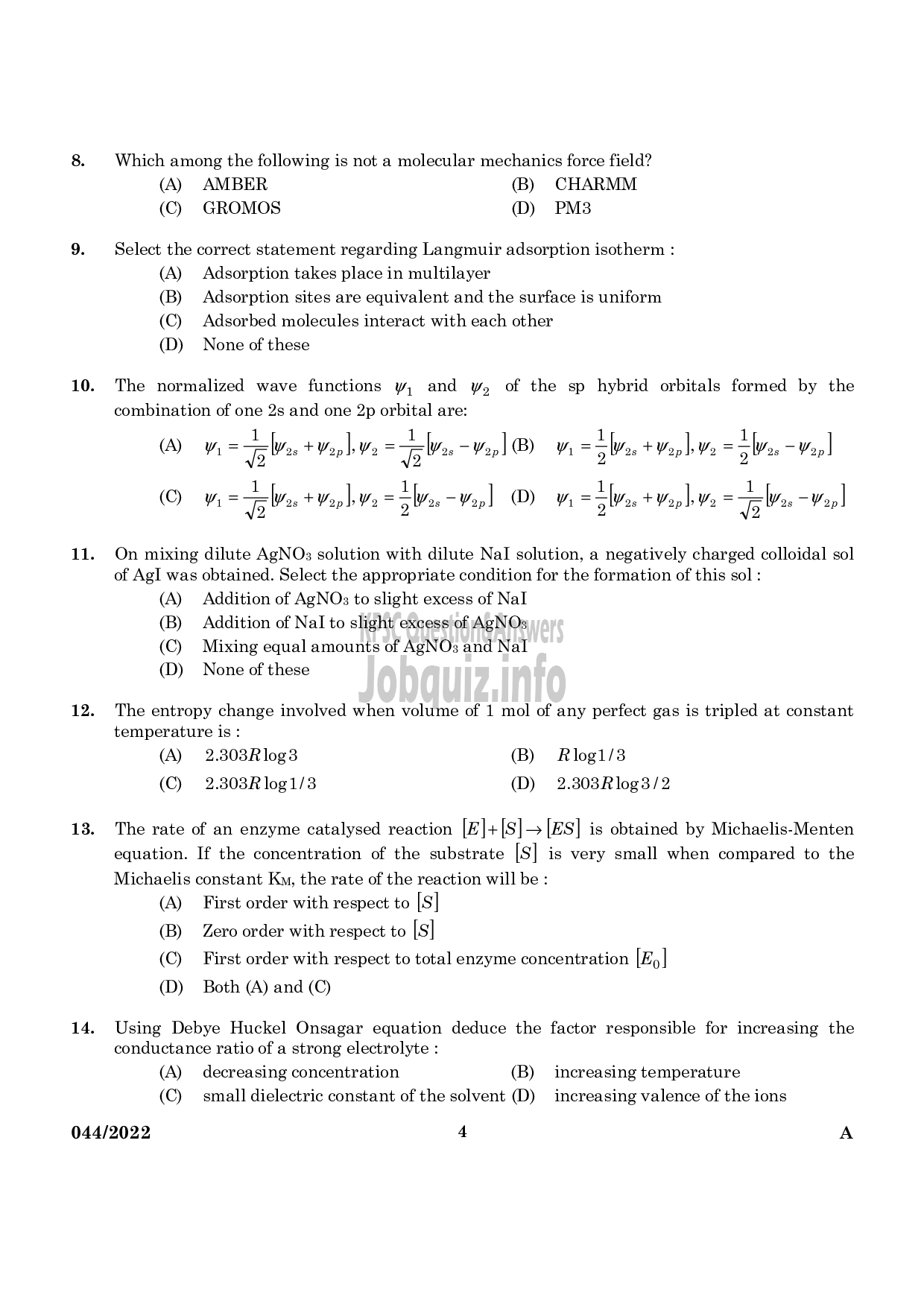Kerala PSC Previous Years Question Paper & Answer
Page:2
Below are the scanned copy of Kerala Public Service Commission (KPSC) Question Paper with answer keys of Exam Name 'Archaeological Chemist - Archaeology ' And exam conducted in the year 2022. And Question paper code was '044/2022'. Medium of question paper was in Malayalam or English . Booklet Alphacode was 'A'. Answer keys are given at the bottom, but we suggest you to try answering the questions yourself and compare the key along wih to check your performance. Because we would like you to do and practice by yourself.
10.
11.
12.
13.
14.
Which among the following is not a molecular mechanics force field?
(A) AMBER (B) CHARMM
(C) GROMOS 0) PM3
Select the correct statement regarding Langmuir adsorption isotherm :
(A) Adsorption takes place in multilayer
(B) Adsorption sites are equivalent and the surface is uniform
(0) Adsorbed molecules interact with each other
(D) None of these
The normalized wave functions y, and yw, of the sp hybrid orbitals formed by the
combination of one 2s and one 2p orbital are:
A w= لاج 177.177 = 1௩, പത ൧ ولا + 7ج |, ४५ = न Yop
© [പപ്പ] ൬ ലി = = ८५. - ملا
v2 2 2 V2
On mixing dilute AgNOs solution with dilute Nal solution, a negatively charged colloidal sol
of AgI was obtained. Select the appropriate condition for the formation of this sol :
(A) Addition of AgNOs to slight excess of Nal
(B) Addition of Nal to slight excess of AgNOs
(C) Mixing equal amounts of AgNO: and Nal
(D) None of these
The entropy change involved when volume of 1 mol of any perfect gas is tripled at constant
temperature is :
(¢^) 2.303Rlog3 ൯ 8
(൫൭ 2.303Rlog1/3 (0) 2.303Rlog3/2
The rate of an enzyme catalysed reaction [ए | + [3] > [ES] is obtained by Michaelis-Menten
equation. If the concentration of the substrate [6] is very small when compared to the
Michaelis constant Kw, the rate of the reaction will be :
(^) First order with respect to [6]
(B) Zero order with respect to [s]
(C) First order with respect to total enzyme concentration [Eo]
(D) Both (A) and (0)
Using Debye Huckel Onsagar equation deduce the factor responsible for increasing the
conductance ratio of a strong electrolyte :
(൧) decreasing concentration (B) increasing temperature
(C) small dielectric constant of the solvent (D) increasing valence of the ions
044/2022 4 A
